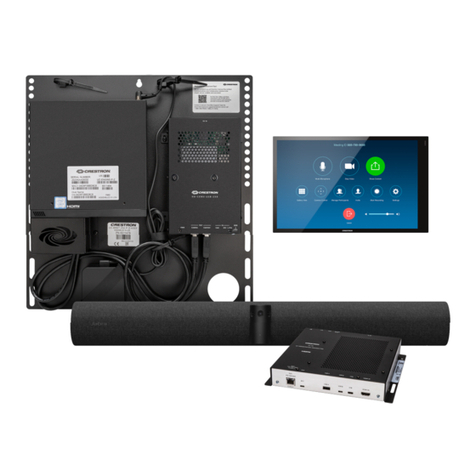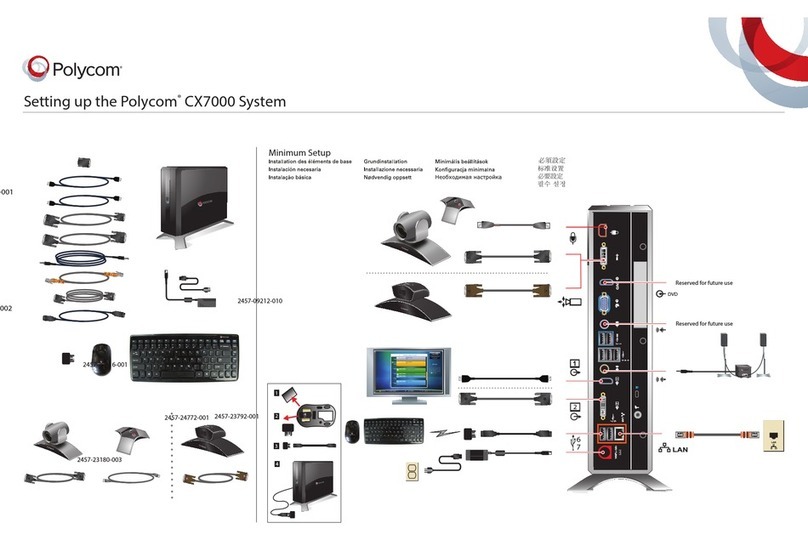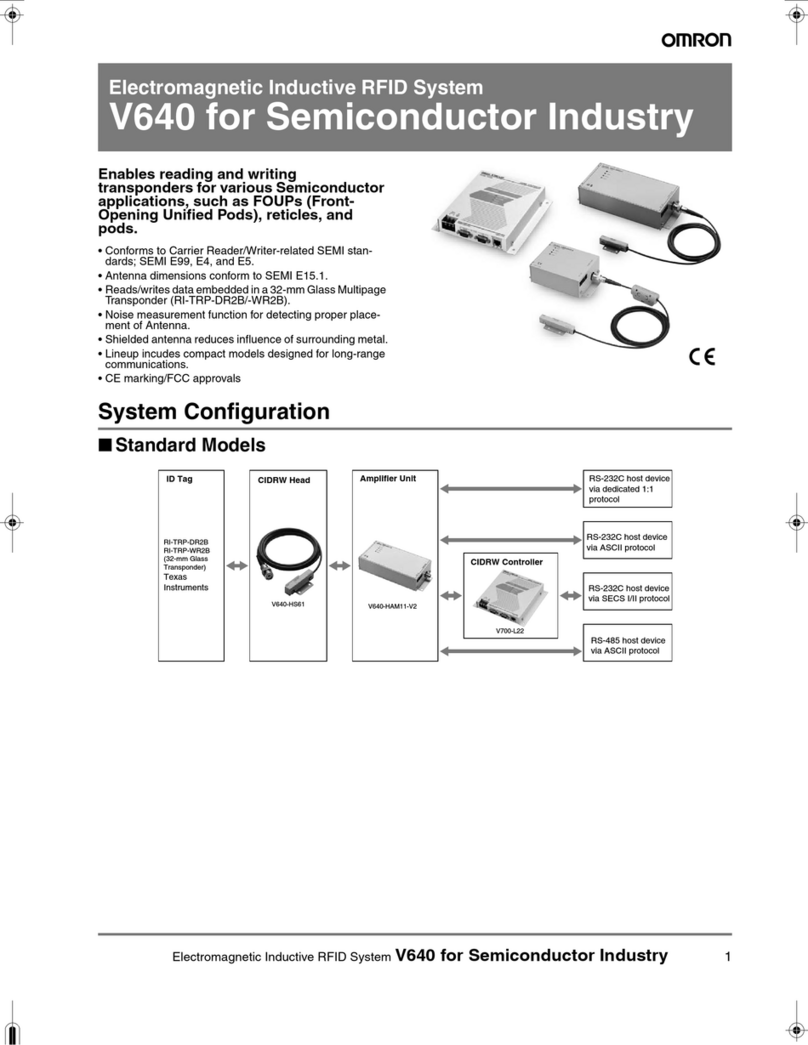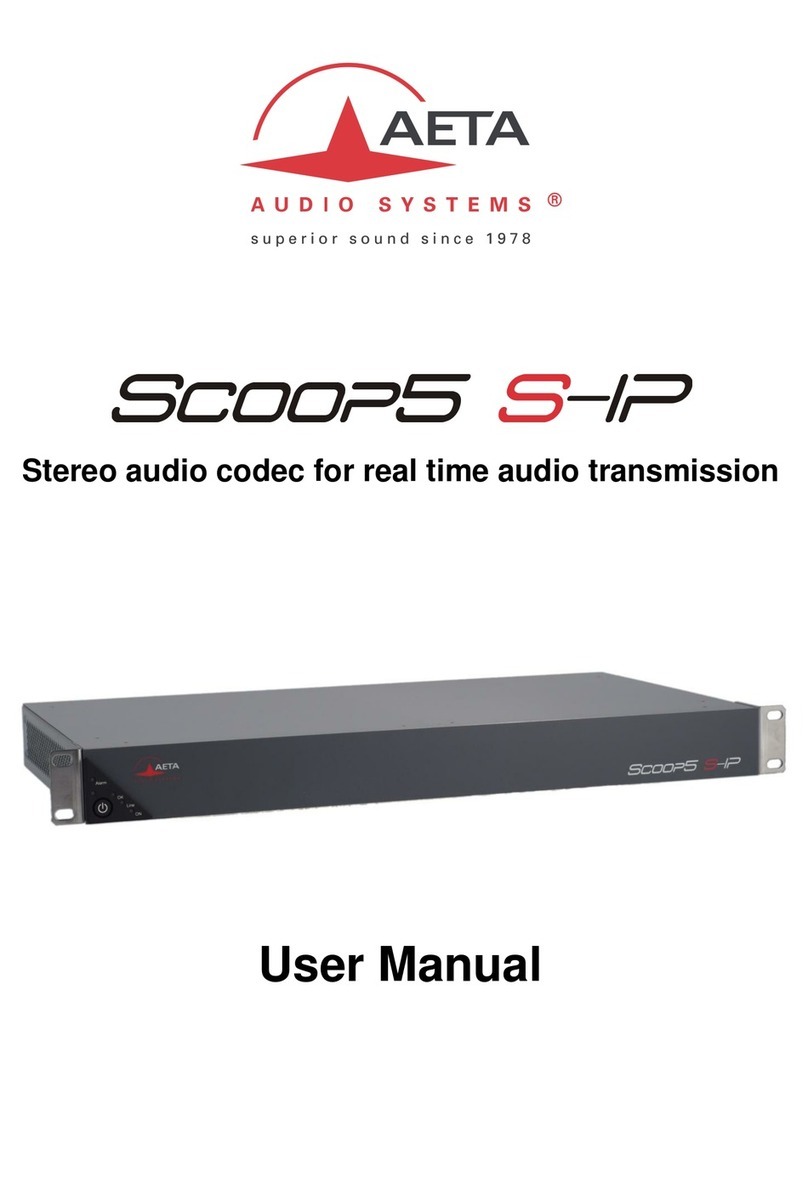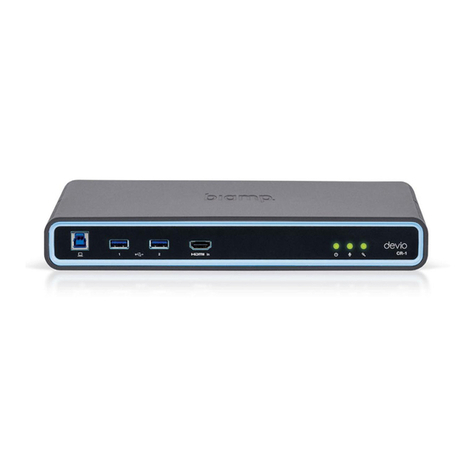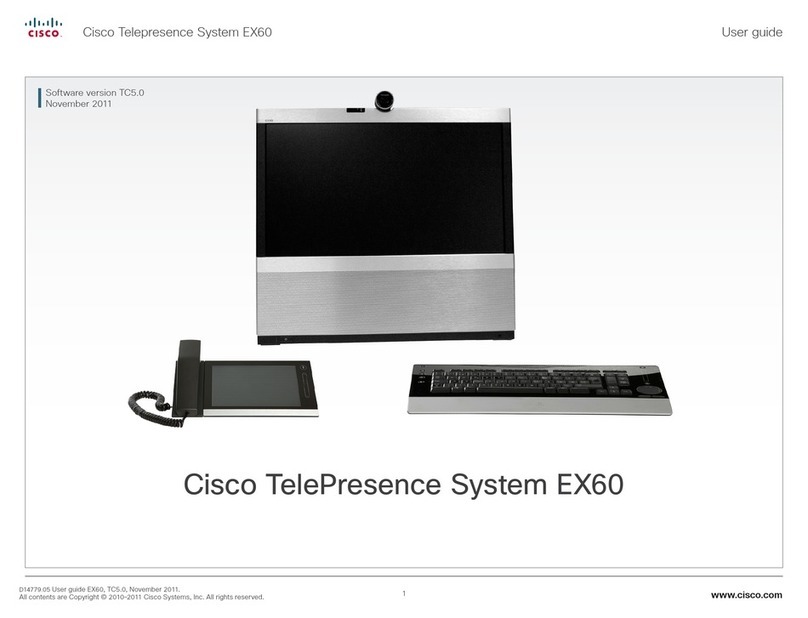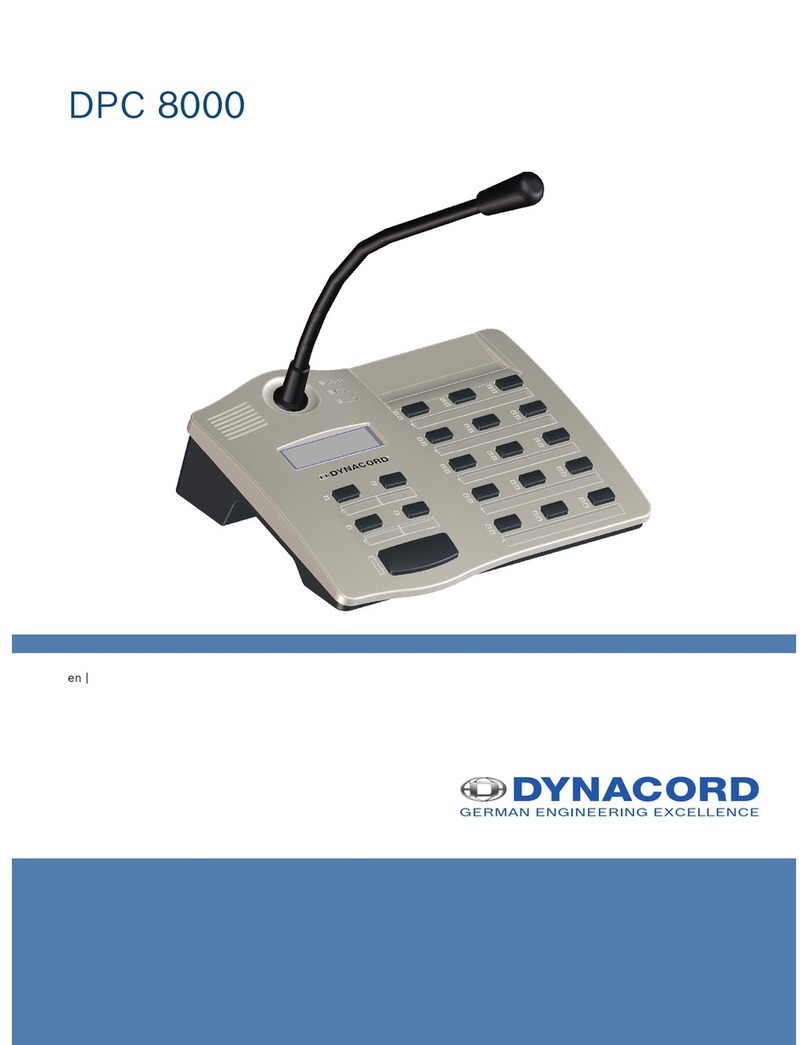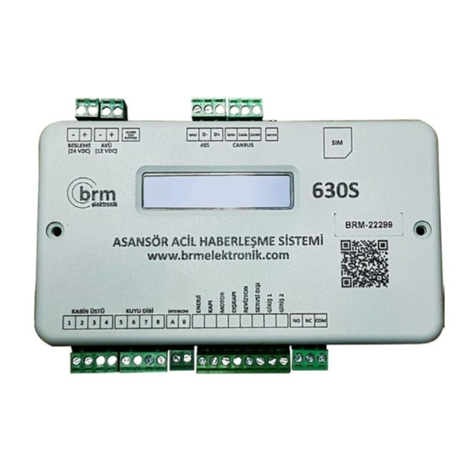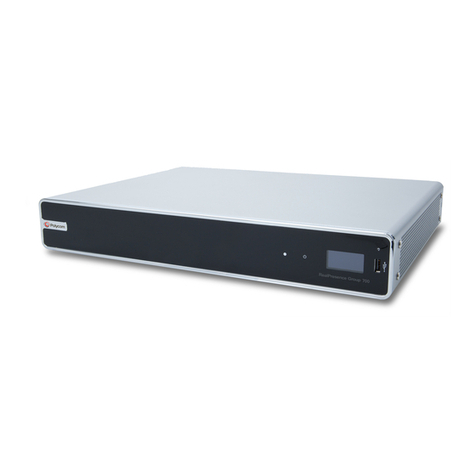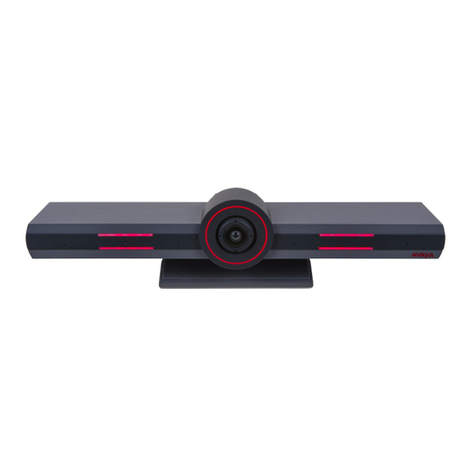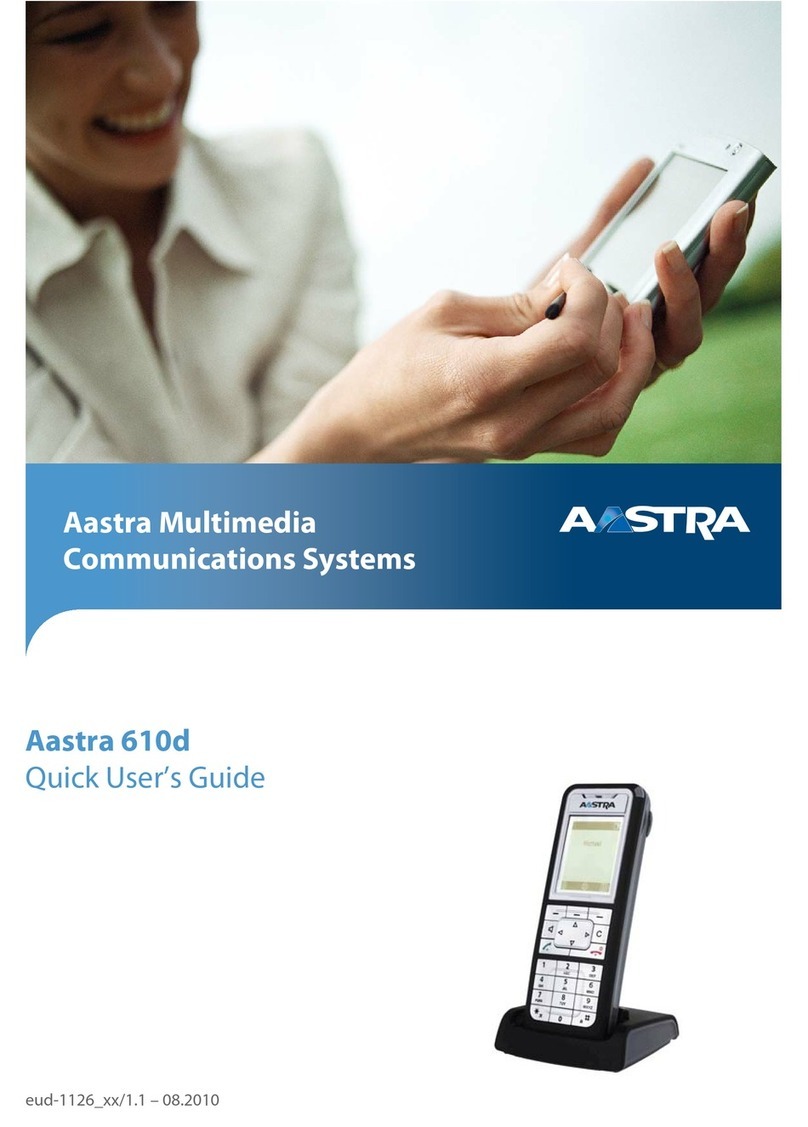Addi-Data APCI-7300-3 Operating manual

Solutions for industrial automation and measurement
___________________________________________________________________________________________________
ADDI-DATA GmbH • Dieselstr. 3 • D-77833 Ottersweier • Phone +49 7223 9493-0 • Fax: +49 7223 9493-92
E-mail: [email protected]
Important information
Communication boards
APCI-7300-3, APCI-7420-3, APCI-7500-3, APCI-7800-3
Pin assignment RS232 modules
01.02 – 03/2007
• Internet: www.addi-data.com

Solutions for industrial automation and measurement
___________________________________________________________________________________________________
Please observe that during the migration to RoHS-compliant boards, the pin assignment of RS232
changed. Thus, there are differences between the different revision numbers of the printed circuit board.
Thereforepleasecheckyourrevisionnumber.
Thankyouforyourattention!
Board Revisionnumber Latesttechnicaldescription
Rev.A-C SeeRev.D,butwithchangedmodemcontrolsignals
DCD&DSRatRS232modules.
APCI-7300-3,
APCI-7420-3,
APCI-7500-3,
fromRev.D Internet:
Manualdownload
Edition:02.03–03/2007-b(andlatereditions)
Rev.A-B SeeRev.C,butwithchangedmodemcontrolsignals
DCD&DSRatRS232modules.
APCI-7800-3
fromRev.C Internet:
Manualdownload
Edition:02.03–03/2007-b(andlatereditions)
9-pinSUB-Dconnectorpinassignmentwith
changedmodemcontrolsignalsDCD&DSR.
APCI-7300-3,-7420-3,-7500-3:Rev.A-C
APCI-7800-3:Rev.A-B
Standard9-pinSUB-Dconnectorpinassignment
APCI-7300-3,-7420-3,-7500-3:fromRev.D
APCI-7800-3:fromRev.C
Pin-No. Signal Pin-No. Signal
1 DSR 1 DCD
2 RXD 2 RXD
3 TXD 3 TXD
4 DTR 4 DTR
5 GND 5 GND
6 DCD 6 DSR
7 RTS 7 RTS
8 CTS 8 CTS
9 RI 9 RI
ADDI-DATA GmbH • Dieselstr. 3 • D-77833 Ottersweier • Phone: +49 7223 9493-0 • Fax: +49 7223 9493-92

Solutions for industrial automation and measurement
___________________________________________________________________________________________________
APCI-7500-3:37-pinSUB-D connector
37-pinSUB-Dconnectorpinassignmentwith
changedmodemcontrolsignalsDCD&DSR.
APCI-7500-3:Rev.A-C
Standard37-pinSUB-Dconnectorpinassignment
APCI-7500-3:fromRev.D
Pin-No. Signal Pin-No. Signal
1,10,24,33 DSR 1,10,24,33 DCD
2,11,25,34 RXD 2,11,25,34 RXD
3,12,26,35 TXD 3,12,26,35 TXD
4,13,27,36 DTR 4,13,27,36 DTR
5,14,28,37 GND 5,14,28,37 GND
6,15,20,29, DCD 6,15,20,29, DSR
APCI-7800-3:78-pinSUB-D connector
78-pinSUB-Dconnectorpinassignmentwith
changedmodemcontrolsignalsDCD&DSR.
APCI-7800-3:Rev.A-B
Standard78-pinSUB-Dconnectorpinassignment
APCI-7800-3:fromRev.C
Pin-No. Signal Pin-No. Signal
1,6,11,16,62,67,72,
77 RI 1,6,11,16,62,67,72,
77 RI
2,7,12,17,63,68,73,
78 DTR 2,7,12,17,63,68,73,
78 DTR
3,8,13,18,40,64,69,
74 GND 3,8,13,18,40,64,69,
74 GND
4,9,14,20,60,65,70,
75, TXD 4,9,14,20,60,65,70,
75, TXD
5,10,15,19,61,66,
71,76 RXD 5,10,15,19,61,66,
71,76 RXD
21,23,26,31,36,48,
53,58 DCD 21,23,26,31,36,48,
53,58 DSR
22,27,32,37,44,49,
54,59 DSR 22,27,32,37,44,49,
54,59 DCD
23,28,33,38,41,45,
50,55, CTS 23,28,33,38,41,45,
50,55, CTS
24,29,34,39,42,46,
51,56 RTS 24,29,34,39,42,46,
51,56 RTS
ADDI-DATA GmbH • Dieselstr. 3 • D-77833 Ottersweier • Phone: +49 7223 9493-0 • Fax: +49 7223 9493-92

Solutions for industrial automation and measurement
___________________________________________________________________________________________________
Shouldyouhavequestions
thatyoudonotfindinthemanual
oronourwebsite(http://www.addi-data.com),
pleasecontactusbyphoneore-mail.
ADDI-DATA GmbH • Dieselstr. 3 • D-77833 Ottersweier • Phone: +49 7223 9493-0 • Fax: +49 7223 9493-92

DIN EN ISO 9001:2000
certified
Edition: 02.03 - 11/2007
A
DDI-DATA GmbH
Dieselstraße 3
D-77833 OTTERSWEIER
+49 (0)7223 / 9493 – 0
Technical description
APCI-7300-3, APCI-7420-3,
APCI-7500-3(/4C), APCI-7800-3
1-port, 2-port, 4-port, 8-port serial
interface for the PCI bus

Product information
This manual contains the technical installation and important instructions for correct commissioning
and usage, as well as production information according to the current status before printing.
The content of this manual and the technical product data may be changed without prior notice.
ADDI-DATA GmbH reserves the right to make changes to the technical data and the materials
included herein.
Warranty and liability
The user is not permitted to make changes to the product beyond the intended use, or to interfere with
the product in any other way.
ADDI-DATA shall not be liable for obvious printing and phrasing errors. In addition, ADDI DATA, if
legally permissible, shall not be liable for personal injury or damage to materials caused by improper
installation and/or commissioning of the board by the user or improper use, for example, if the board is
operated despite faulty safety and protection devices, or if notes in the operating instructions regarding
transport, storage, installation, commissioning, operation, thresholds, etc. are not taken into
consideration. Liability is further excluded if the operator changes the board or the source code files
without authorisation and/or if the operator is guilty of not monitoring the permanent operational
capability of working parts and this has led to damage.
Copyright
This manual, which is intended for the operator and its staff only, is protected by copyright.
Duplication of the information contained in the operating instructions and of any other product
information, or disclosure of this information for use by third parties, is not permitted, unless this right
has been granted by the product licence issued. Non-compliance with this could lead to civil and
criminal proceedings.
ADDI-DATA software product licence
Please read this licence carefully before using the standard software. The customer is only granted the
right to use this software if he/she agrees with the conditions of this licence.
The software must only be used to set up the ADDI-DATA boards.
Reproduction of the software is forbidden (except for back-up and for exchange of faulty data
carriers). Disassembly, decompilation, decryption and reverse engineering of the software are
forbidden. This licence and the software may be transferred to a third party if this party has acquired a
board by purchase, has agreed to all the conditions in this licence contract and the original owner does
not keep any copies of the software.
Trademarks
-ADDI-DATA is a registered trademark of ADDI-DATA GmbH.
-Turbo Pascal, Delphi, Borland C, Borland C++ are registered trademarks of Borland Insight
Company.
-Microsoft C, Visual C++, Windows XP, 98, Windows 2000, Windows 95, Windows NT,
EmbeddedNT and MS DOS are registered trademarks of Microsoft Corporation.
-LabVIEW, LabWindows/CVI, DasyLab, Diadem are registered trademarks of National Instruments
Corp.
-CompactPCI is a registered trademark of PCI Industrial Computer Manufacturers Group.
-VxWorks is a registered trademark of Wind River Systems Inc.

3
WARNING
The following risks result from improper implementation
and from use of the board contrary to the regulations:
♦Personal injury
♦Damage to the board, PC and peripherals
♦Pollution of the environment
♦Protect yourself, the others and the environment!
♦Read carefully the safety precautions
(yellow leaflet).
If this leaflet is not with the documentation, please contact
us and ask for it.
♦Observe the instructions of the manual.
Make sure that you do not forget or skip any step.
We are not liable for damages resulting from a wrong use
of the board.
♦Used symbols:
i IMPORTANT!
designates hints and other useful information.
WARNING!
It designates a possibly dangerous situation.
If the instructions are ignored the board, PC and/or peripheral may
be destroyed.

Contents APCI-7xxx-3
4
1DEFINITION OF APPLICATION ...............................9
1.1 Intended use ....................................................................9
1.2 Usage restrictions.............................................................9
1.3 General description of the board ....................................9
2USER..................................................................12
2.1 Qualification ..................................................................12
2.2 Personal protection........................................................12
3HANDLING OF THE BOARD..................................13
4TECHNICAL DATA ...............................................14
4.1 Electromagnetic compatibility (EMC) ............................14
4.2 Physical set-up of the board..........................................14
4.3 Limit values.....................................................................16
4.3.1 RS232.................................................................................. 17
4.3.2 RS422, RS485...................................................................... 17
Without optical isolation (MX422, MX485)........................... 17
With optical isolation (MX422-G, MX485-G) ........................ 17
4.3.3 20mA constant current loop (MXTTY)................................... 18
4.4 Component scheme and block diagrams.....................19
5INSTALLATION OF THE BOARD.............................25
5.1 Opening the PC..............................................................25
5.2 Selecting a free slot .......................................................25
5.3 Plugging the board into the slot ....................................26
5.4 Closing the PC ...............................................................27
6BOARD CONFIGURATION...................................28
6.1 Configuration under Windows XP/2000/95/98/
Server 2003 ...................................................................29
6.2 Board test.......................................................................32
6.3 Questions and software downloads on the web............33
7CONNECTING THE PERIPHERAL...........................34
7.1 Connector pin assignment: APCI-7500-3 ......................34
7.2 Pin assignment: APCI-7420-3, APCI-7300-3 and
APCI-7500-3(/4C)............................................................35
7.3 Pin assignment: APCI-7800-3.........................................36

Contents APCI-7xxx-3
5
7.4 Pin assignments (APCI-7500-3): RS422 with
handshake signals.........................................................41
7.5 Pin assignments (APCI-7420-3 and APCI-7300-3): RS422
with handshake signals .................................................41
7.6 Connection cable – APCI-7500-3 ..................................42
7.7 Connection examples....................................................43
7.7.1 APCI-7500-3 ........................................................................43
RS232 cabling.....................................................................43
RS422 cabling.....................................................................44
RS485 cabling.....................................................................44
Current loop (20 mA) cabling..............................................45
7.7.2 APCI-7300-3, APCI-7420-3, APCI-7500-3/4C .......................47
RS232 cabling.....................................................................47
RS422 cabling.....................................................................47
RS485 cabling.....................................................................48
Current loop (20 mA) cabling..............................................48
7.7.3 APCI-7800-3 ........................................................................50
7.8 Connection examples....................................................52
7.8.1 RS232 cabling.....................................................................52
7.8.2 RS422 cabling.....................................................................52
7.8.3 RS485 cabling.....................................................................53
7.8.4 Current Loop (20 mA) cabling.............................................53
8TESTING THE BOARD...........................................55
8.1 Connecting a shorting plug...........................................55
8.2 Testing the board with the MTTTY program.....................57
RS422, RS232 and 20 mA Current Loop ..............................57
RS485 ..................................................................................59
9REPLACING THE MODULES..................................60
9.1 Replacing the MX modules............................................60
10 GLOSSARY..........................................................61
11 INDEX ................................................................64

APCI-7xxx-3 Figures and Tables
6
Figures
Fig. 3-1: Correct handling.........................................................................14
Fig. 4-1: Component scheme of the APCI-7300-3, APCI-7420-3 and APCI-
7500-3.....................................................................................20
Fig. 4-2: Component scheme of the APCI-7800-3...................................21
Fig. 4-3: Component scheme of the APCI-7800-3 (solder side)...............22
Fig. 4-4: Block diagram of the APCI-7300-3..............................................23
Fig. 4-5: Block diagram of the APCI-7420-3..............................................23
Fig. 4-6: Block diagram of the APCI-7500-3..............................................24
Fig. 4-7: Block diagram of the APCI-7500-3/4C........................................24
Fig. 4-8: Block diagram of the APCI-7800-3..............................................25
Fig. 5-1: Slot types.....................................................................................26
Fig. 5-2: Inserting the board......................................................................27
Fig. 5-3: Fastening the board at the back cover......................................28
Fig. 6-1: FIFO settings under Windows 2000 ..........................................141H30
13HFig. 6-2: Setting example: RS485FF ..........................................................142H31
14HFig. 6-3: Setting example: MXTTY current loop: Module configurationFF ..143H32
15HFig. 6-4: Setting example: MXTTY current loop: Input clockFF...................144H33
16HFig. 7-1: 37-pin SUB-D male connector (of the board)..............................145H35
17HFig. 7-2: 9-pin SUB-D male connector ......................................................146H36
18HFig. 7-3: 78-pin SUB-D female connector (of the board) ..........................147H37
19HFig. 7-4: Connection cable ST074 (4 x 25-pin)..........................................148H43
20HFig. 7-5: Connection cable ST075 (4 x 9-pin)............................................149H43
21HFig. 7-6: RS232 cabling - 4-port interface.................................................150H44
22HFig. 7-7: RS422 cabling - 4-port interface.................................................151H45
23HFig. 7-8: RS485 cabling - 4-port interface.................................................152H45
24HFig. 7-9: Active transmission/active reception 4-port serial interface........153H46
25HFig. 7-10: Active transmission/passive reception 4-port serial interface....154H46
26HFig. 7-11: Passive transmission/active reception 4-port serial interface ....155H47
27HFig. 7-12: Passive transmission/passive reception 4-port serial interface ..156H47
28HFig. 7-13: RS232 cabling - 9-pin connector..............................................157H48
29HFig. 7-14: RS422 cabling - 9-pin connector..............................................158H48
30HFig. 7-15: RS485 cabling - 9-pin connector..............................................159H49
31HFig. 7-16: Active transmission/active reception 9-pin connector..............160H49
32HFig. 7-17: Active transmission/passive reception 9-pin connector............161H50
33HFig. 7-18: Passive transmission/active reception 9-pin connector............162H50
34HFig. 7-19: Passive transmission/passive reception 9-pin connector ..........163H51
35HFig. 7-20: Connection cable ST7809 (8 x 9 pin)........................................164H51
36HFig. 7-21: Connection cable ST7825 (8 x 25 pin)......................................165H52
37HFig. 7-22: RS232 cabling...........................................................................166H53
38HFig. 7-23: RS422 cabling...........................................................................167H53
39HFig. 7-24: RS485 cabling...........................................................................168H54
40HFig. 7-25: Active transmission/active reception ........................................169H54
41HFig. 7-26: Active transmission/passive reception ......................................170H55
42HFig. 7-27: Active transmission/passive reception – 4-fold interface ..........171H55
43HFig. 7-28: Passive transmission/passive reception.....................................172H55
44HFig. 8-1: Connection of the shorting plug RS232 ......................................173H56

APCI-7xxx-3 Figures and Tables
7
45HFig. 8-2: Connection of the shorting plug RS422......................................174H56
46HFig. 8-3: Connection of the shorting plug for 20 mA Current Loop – active
transmission/passive reception................................................175H57
47HFig. 8-4: Connection of the shorting plug for 20 mA current Loop – passive
transmission / active reception................................................176H57
48HFig. 8-5: The MTTTY program.....................................................................177H58
49HFig. 8-6: Window: “Comm Status” ............................................................178H59
50HFig. 8-7: Window: „Flow Control“...............................................................179H59
51HFig. 8-8: Window: „Flow Control Settings”..................................................180H59
52HFig. 9-1: Removing the MX module .........................................................181H61
53HFig. 9-2: Inserting the MX module.............................................................182H61

APCI-7xxx-3 Figures and Tables
8
Tables
54HTable 1-1: Different communication operating modes...........................183H10
55HTable 7-1: Pin assignment of the 37-pin connector..................................184H34
56HTable 7-2: Pin assignment of the 9-pin connector....................................185H35
57HTable 7-3: Pin assignment of port 1 ..........................................................186H36
58HTable 7-4: Pin assignment of port 2 .........................................................187H37
59HTable 7-5: Pin assignment of port 3 .........................................................188H37
60HTable 7-6: Pin assignment of port 4 .........................................................189H38
61HTable 7-7: Pin assignment of port 5 .........................................................190H38
62HTable 7-8: Pin assignment of port 6 ..........................................................191H39
63HTable 7-9: Pin assignment of port 7 .........................................................192H39
64HTable 7-10: Pin assignment of port 8 .......................................................193H40
65HTable 7-11: Pin assignment of the 37-pin connector: RS422 with
handshake signals...................................................................194H41
66HTable 7-12: Pin assignment of the 9-pin connector: RS422 with
handshake signals...................................................................195H41
67HTable 10-1: Glossary .................................................................................196H61

APCI-7xxx-3 Figures and Tables
9
1DEFINITION OF APPLICATION
1.1 Intended use
The board APCI-7xxx-3F0F1Fmust be inserted in a PC with PCI 5V/32 bit (PCI
3.3V/32 Bit) which is used as electrical equipment for measurement, control and
laboratory pursuant to the norm EN 61010-1 (IEC 61010-1). The used personal
computer (PC) must fulfil the requirements of IEC 60950-1 or EN 60950-1 and
55022 or IEC/CISPR 22 and EN 55024 or IEC/CISPR 24.
The use of the board APCI-7xxx-3 in combination with external screw terminal
panels requires correct installation according to IEC 60439-1 or EN 60439-1
(switch cabinet / switch box).
1.2 Usage restrictions
The APCI-7xxx-3 board must not to be used as safety related part (SRP).
The board must not be used for safety related functions, for example for
emergency stop functions.
The APCI-7xxx-3 board must not be used in potentially explosive atmospheres.
The APCI-7xxx-3 board must not be used as electrical equipment according to
the Low Voltage Directive 2006/95/EC.
1.3 General description of the board
The board APCI-7xxx-3 provides the personal computer (PC) with 1-port, 2-port,
4-port or 8-port asynchronous serial interface for the communication with external
devices:
Board Interface
APCI-7300-3 1-port
APCI-7420-3 2-port
APCI-7500-3,
APCI-7500-3/4C
4-port
APCI-7800-3 8-port
The operating mode of the interface depends on the MX modules installed.
The board is to be connected to the peripheral through a shielded cable, which
shielding should be grounded on both ends.
1Common designation in the manual for the boards APCI-7300-3, APCI-7420-3, APCI-7500-3,
APCI-7500-3/4C and APCI-7800-3

APCI-7xxx-3 Figures and Tables
10
Minimum specifications of the connection cable:
- metallized plastic hoods
- shielded cable
- cable shield folded back and firmly screwed to the connector housing.
The board supports serial communication through 1, 2 or 4 asynchronous serial
ports. The use of the board depends on the following parameters (See table
below).

APCI-7xxx-3 Figures and Tables
11
Table 1-1: Different communication operating modes
ModuleF1F1F Operating
mode Port
configuration
Distance between
transmitter and
receiverF2F2F
Environment
MX232
RS232
Bridge modem control signals
externally at the male connector.
30 m
Industry
MX232-G RS232 Bridge modem control signals
externally at the male connector.
30 m
Noisy
industrial
environment
MXTTY
20 mA
Constant
current
With closed circuit current
1 km Extremely
noisy industrial
environment
MX422
RS422
1.2 km Noisy
industrial
environment
MX422-G RS422
1.2 km Extremely
noisy industrial
environment
Automatic transmitter control 1.2 km industry
MX485
RS485 DTR, RTS transmitter control
1.2 km Noisy
industrial
environment
Automatic transmitter control 1.2 km industry
MX485-G RS485 DTR, RTS transmitter control
1.2 km very noisy
industrial
environment
If the basic board APCI-7xxx-3 is used with optically isolated modules and non
isolated modules, then the safety built by the creeping distance of 3.2 mm is not
ensured for the non isolated modules.
The use of the board in a PC could change the PC features regarding noise
emission and immunity. Increased noise emission or decreased noise immunity
could result in the system not being conform anymore.
Check the shielding capacity of the PC housing and cable prior to putting the
device into operation.
The use of the board includes observing all advises given in this manual and in the
safety leaflet.
1MXxxx-G: E.g. PM232-G: Module for the operating mode RS 232 with option G (optical
isolation)
MXTTY: Module for 20 mA constant loop. As standard it is optically isolated.
2The max. lengths are for standard interface cables

APCI-7xxx-3 Figures and Tables
12
Uses beyond these specifications are not allowed. The manufacturer is not liable
for any damages which would result from the non-observance of this clause.
Make sure that the board remains in the protective blister pack
until it is used.
For all operating modes, the signal lines are to be twisted in pairs with GND.
Use exclusively connection cable with twisted pairs.
The housing of the peripheral connector
-is to be firmly screwed together with the shield of the cable.
-is to assure a low-resistance connection (< 100 mΩ) between the shield and the
housing of the PC.
The shield of the cable is to be earthed on both ends.
Do not remove or alter the identification numbers of the board.
If you do, the guarantee expires.

APCI-7xxx-3 Figures and Tables
13
2USER
2.1 Qualification
Only persons trained in electronics are entitled to perform the following works:
-installation
-use
-maintenance
2.2 Personal protection
Consider the country-specific regulations about:
-the prevention of accidents
-electrical and mechanical installations
-radio interference suppression

APCI-7xxx-3 Figures and Tables
14
3HANDLING OF THE BOARD
Fig. 3-1: Correct handling

APCI-7xxx-3 Figures and Tables
15
4TECHNICAL DATA
4.1 Electromagnetic compatibility (EMC)
The board APCI-7xxx-3 complies with the European EMC directive. The tests
were carried out by a certified EMC laboratory in accordance with the norm from
the EN 61326 series (IEC 61326). The limit values as set out by the European
EMC directive for an industrial environment are complied with.
The respective EMC test report is available on request.
4.2 Physical set-up of the board
The boards APCI-7500-3, APCI-4720-3 and APCI-7300-3 are assembled on a
4-layer printed circuit card.
Dimensions:
151 mm
99 mm
Weight: ...................................................... approx. 120 g
Installation in: ........................................... 32/64-bit PCI slot
(5 V and 3.3 V)
Connection to the peripheral:
APCI-7300-3: ........................................... 9-pin SUB-D male connector
APCI-7420-3: ........................................... 2 x 9-pin male SUD-D male connector
APCI-7500-3: ........................................... 37-pin SUB-D male connector
APCI-7500-3/4C: ..................................... 4 x 9-pin SUB-D male connector with 2nd slot
Connection cables for the APCI-7500-3F3F
1
F:
ST074:
37-pin SUB-D female connector to 4 x 25-pin SUB-D male connector
ST075:
37-pin SUB-D female connector to 4 x 9-pin SUB-D male connector
WARNING!
The supply lines must be installed safely against mechanical
loads.
The board APCI-7800-3 is assembled on a 6-layer circuit.
Dimensions:
1Not included in the standard delivery.

APCI-7xxx-3 Figures and Tables
16
175 mm
99 mm
Weight: ..................................................... approx. 150 g
Installation in: ........................................... 32/64-bit PCI slot
(5 V and 3.3 V)
Connection to the peripheral:
78-pin SUB-D female connector
Connection cable for the APCI-7800-3F4F1F
ST7809:
78-pin SUB-D male connector to 8 x 9 pin SUB-D male connector
ST075:
78-pin SUB-D male connector to 8 x 25-pin SUB-D male connector
WARNING!
The supply lines must be installed safely against
mechanical loads.
1Not contained in the standard delivery. Please order separately.
This manual suits for next models
3
Table of contents


